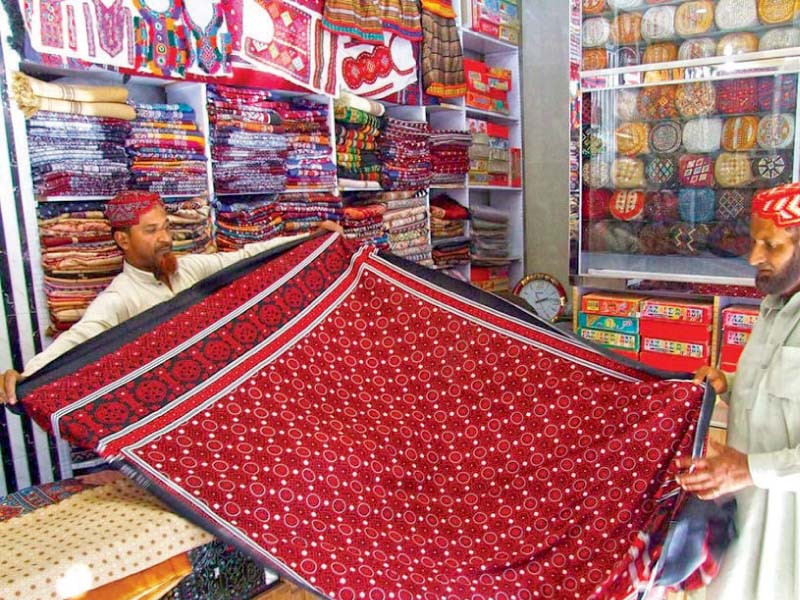
Ajrak is a unique and traditional form of block-printed shawl or scarf indigenous to the Sindh region of Pakistan and parts of India. The art of Ajrak making has a history spanning over 5,000 years and is deeply ingrained in the cultural heritage of the Sindhi people. These intricately designed patterns reflect the natural elements of the region, including the sun, moon, and stars.
According to reports, the influence of Arabs can also be seen in the crafting of Ajrak and Sindhi topis. This globally sought-after textile undergoes a meticulous production process. From its colouring to its intricate designs, every step is painstakingly carried out by skilled hands.
The base colour of Ajrak can vary by region, with some areas favouring black while others opt for red or blue as the primary hue. Ajrak typically consists of four main colours: white, red, black, and blue. To create its distinctive patterns, approximately 144 stamps are employed.
Ajrak is not just a textile; it is an emblem of Sindh's identity. It symbolises pride and respect for men and radiance for women. Sindhi people often present Ajrak as a gesture of hospitality to their guests.
Ajrak holds an integral place in the lives of Sindhi people, from cradle to grave. It is used as a hammock for infants, headgear for girls, a bridal accessory, a turban, a shawl, a bed cover, a tablecloth, a gift item, and a token of respect to honor guests.
Published in The Express Tribune, September 21st, 2023.




1725885571-0/Tribune-Pic-(9)1725885571-0-165x106.webp)













COMMENTS
Comments are moderated and generally will be posted if they are on-topic and not abusive.
For more information, please see our Comments FAQ